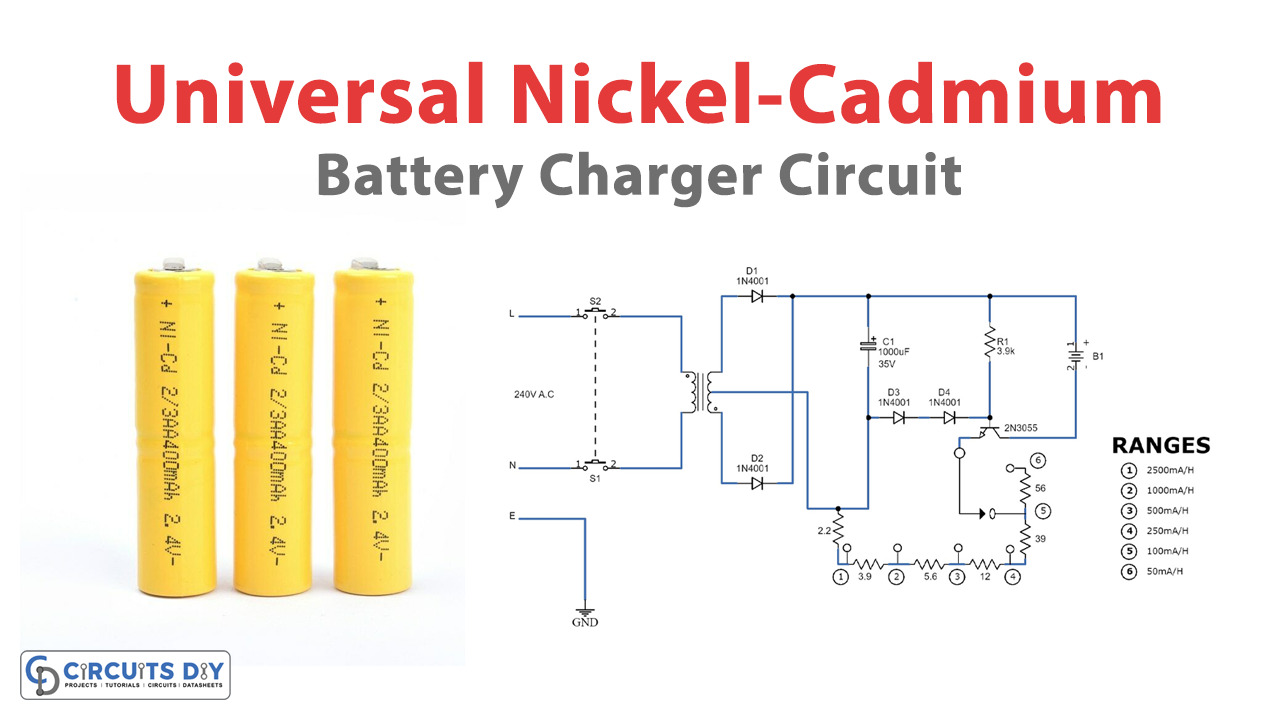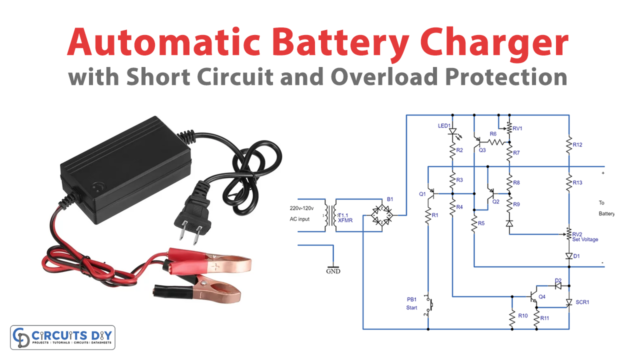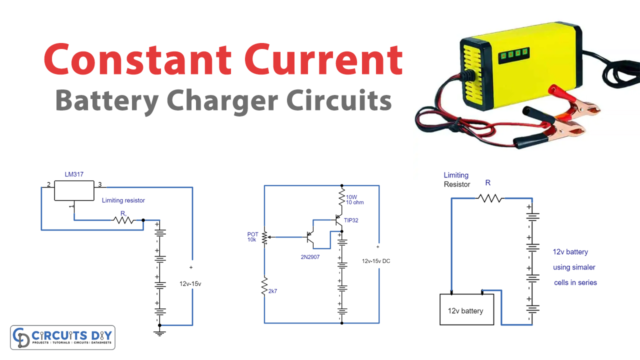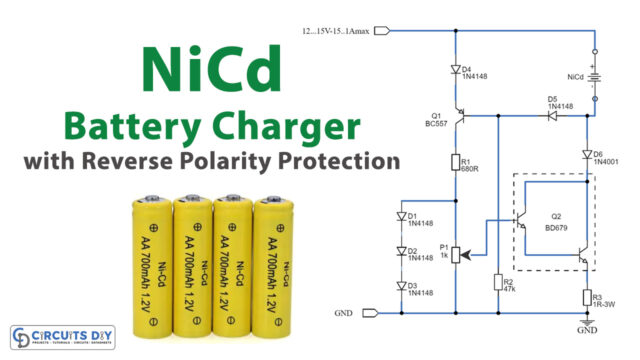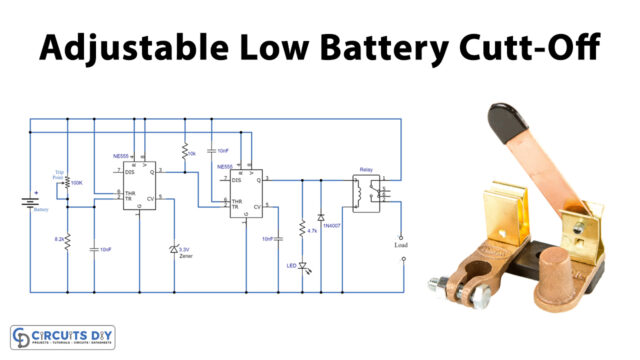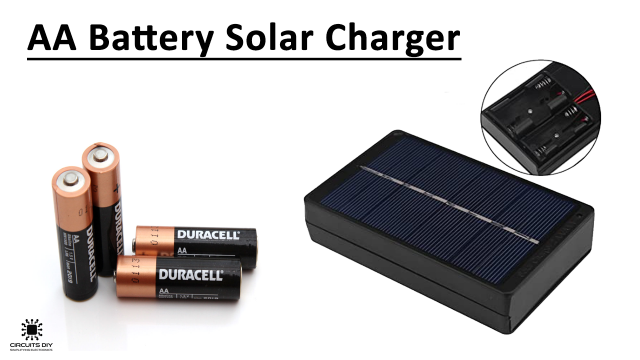Introduction
The increasing use of portable devices such as calculators and flashguns powered by nickel-cadmium batteries has made rechargeable batteries essential. Standard chargers with such devices are unsuitable when replacing normal dry cells with rechargeable ones, as the batteries have different voltage and ampere-hour ratings.
In response to this challenge, a universal nickel-cadmium battery charger circuit has been developed to charge batteries with varying capacities. This article will explore the design and operation of this innovative circuit.
Hardware Required
| S.no | Components | Value | Qty |
|---|---|---|---|
| 1 | Transformer | – | 1 |
| 2 | Transistor | 2N3055 | 1 |
| 3 | Resistor | 2.2, 3.9, 5.6, 12, 39, 56, 3.9k | 1, 1, 1, 1, 1, 1, 1 |
| 4 | Battery | – | 1 |
| 5 | Polar Capacitor | 1000uF | 1 |
| 8 | Diode | 1N4001 | 4 |
| 9 | Switch | – | 2 |
Circuit Diagram

Circuit Operation
The universal nickel-cadmium battery charger circuit is designed to automatically charge any battery voltage up to 20V without needing voltage selection. The charging rate can be set from a selector switch for batteries with capacities ranging from 50 mA/h to 2500 mA/h. The recharge time for a flat battery is approximately 14 hours, while for partially charged batteries, the charging time varies.
The circuit employs current regulators, which maintain a constant current level despite variations in load impedance. The mains voltage is reduced from 240 Vac to 40 Vac by a step-down transformer T1. The sinusoidal voltage is then rectified by diodes D1 and D2 and filtered by capacitor C1 to produce around 28 Vdc.
Q1 and its associated components regulate this DC voltage to generate a current level selected by SW2. The biasing of transistor Q1 by D3 and D4 establishes a voltage of around 1.2 V between the negative terminal of C1 and the base of Q1. As a result, the emitter current of Q1 must be 0.6 V divided by the resistor value selected by SW2, creating an almost identical collector current that charges the battery and remains constant, provided there is at least 1 V between the collector and emitter of transistor Q1.
Conclusion
The universal nickel-cadmium battery charger circuit is an impressive example of how we can combine innovation and practicality to create a solution that meets a growing need. Its unique design and use of current regulators ensure that we can efficiently charge batteries of different capacities without damage. Its ability to charge batteries automatically up to 20V without the need for voltage selection makes it an ideal choice for a wide range of applications.
We hope this article has been informative and helpful in understanding the operation and design of this circuit. If you have any queries or suggestions, please feel free to comment below. We appreciate your feedback and look forward to hearing from you.


